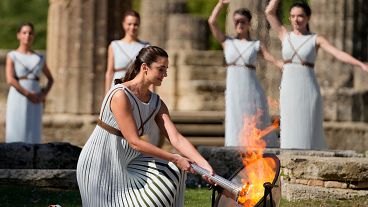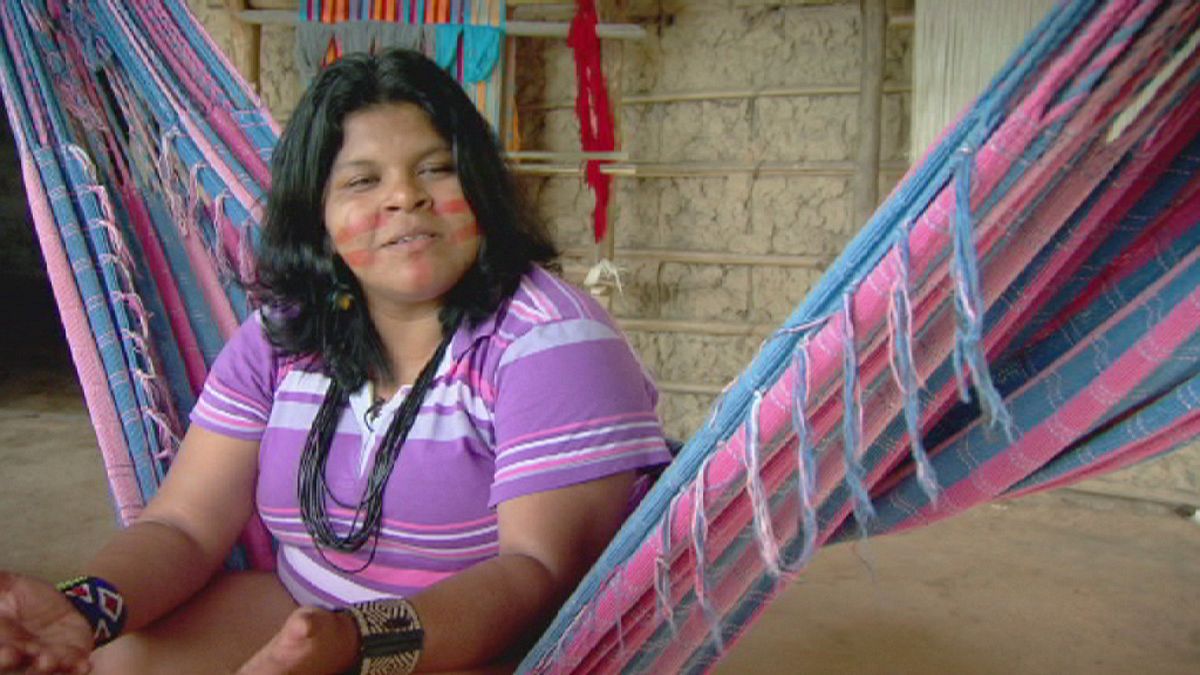In Brazil, more than 1,500 people have been killed in a war over the use of the land.
Despite the mountain of murders, there have been scarcely 100 trials, and only one culprit is behind bars.
There are some 2,000 activists in Brazil currently living under threat from the infamous ‘pistoleiros’.
Among them is Sonia Bonê Guajajara, the Vice-President for Coordination of Indigenous Organisations in Brazilian Amazonia.
It is at the forefront in the fight for the rights of indigenous peoples, representing about 450,000 Amazonian Indians.
Sonia told euronews: “Coming back here, to my village, always gives me a feeling of joy, great joy. Because I feel at home here, I feel I’m truly myself.”
She is one of the representatives of the Guajajara people, made up of 16 tribes and some 20,000 inhabitants, in the Amazonian state of Maranhao.
She often visits the community, and her native village. Here people feel their rights and way of life are increasingly under threat.
“Everyone is faced with the major problem of the illegal use of land,” Sonia said. “Whether it’s wood, or animals, through hunting or fishing. Nowadays, our forest has been virtually devastated by deforestation. We no longer have as many natural riches as we did 30 years ago.”
When the Europeans arrived in Brazil five centuries ago, the indigenous population numbered five million.
Now, there remain just 700,000 – three-tenths of one per cent of Brazil’s population.
Most of them now live on land which has been officially designated as “protected indigenous zones”.
But that protection is being increasingly challenged, given the rich unexploited resources that are at stake in those territories.
It is a three-hour flight from the rainforest to Brasilia, a trip Sonia makes regularly so the indigenous peoples’ voice can be heard in the capital.
She has become a familiar face at the environment ministry.
Sonia told us: “We keep seeing indigenous people being thrown off their land and companies settling in their villages, inside the indigenous zones. The main battle-front for the indigenous Maranhao people is for land protection. Because if we can guarantee that protection, then public policies, like health and education for instance, will improve.”
While Sonia is negotiating at the ministry, a few hundred metres away, farmers and cattle breeders have gathered for a mass demonstration. They believe too much land in Brazil is protected.
Their spokeswoman, Katia Abreu, said: “Out of 850-million hectares, only 230-million are used to produce rice, beans, maize, or meat, on land that amounts to less than 30 percent of Brazil’s territory! Ours is the only country in the world that agrees to give up fertile land which could produce food!”
Amazonia covers 60 percent of Brazil’s territory, and yet accounts for just eight percent of the country’s total economic output.
To major agricultural and industrial concerns – both Brazilian and foreign – that means it is rich with economic potential.
The pressure on the forest and its inhabitants just keeps on mounting.
“They really have so much money and power, that the fight is unequal,” Sonia explained. “Sometimes, we are even condemned because we are fighting for our rights. But we are never discouraged because we believe in our strength, in our loyalty towards these people. And nothing, no defeat, will make us give up our struggle.”


